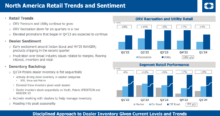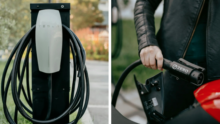You want loyal customers? Let your value speak volumes
New in a small town, and I was giving the town cleaners a try. It didn’t look like much, but I knew they were local, and I thought I would support my neighbors. I hadn’t expected what I found: The place was a dump! I lasted about a year, and left for another shop that was clean, fast and fair. To this day that clean shop has my business.
Just around the corner from the town cleaners is a nice little bakery. The sign in the window says “Gone Fishing.” And they fish a lot. Now I drive up the road to the Beau Brummel bakery, where Chrystal and Elizabeth know my name. They wear aprons covered with flour dust, and their hair is a little out of place from rolling out dough since 4 this morning. They smile, and totally enjoy their little bakery. It takes an effort not to stop there too often.
So am I a loyal customer? Yes. But I am not loyal to a business. I am loyal to value. And if value is not there, I am gone.
It is time we rethink this “loyalty” thing. Fred Reichheld did just that years ago, when his partners Mitt Romney and others at Bain Capital tasked him with understanding what loyalty really means. Fred tore into it and came out with answers that stand to this day in his book, “The Loyalty Effect.”
Fred found that loyalty must be created at three different levels for a business to be successful: First, loyalty from the customer to the business; second, from management to the employees; and third, from the stockholders to management. I will focus here on only the customer, and return to the other two at a later date.
After wading through all the obvious answers and digging deep, Reichheld concluded that customer loyalty is dependent not on price, location, or personal friendship, but rather on true value received. In biology classes years ago, I learned that all players act in their own self interest. In nature, as conditions change, plants, animals and people must adapt, perish, or migrate. It is no different in commerce. If value to the customer falls below the cost of the product or service, the customer is no longer “loyal.” He walks (“migrates”). Value, Fred found, is measured as the ratio of either the utility of the product, the quality of the goods, or the pleasure received, weighed against the cost of the product or service.
Customers vote with their feet. If they receive value for their money, they come back. If not, they’re gone. Unfortunately, repeating purchases of a non-necessity like a motorcycle are not cyclical (no pun intended here), but the return visits of riders to the parts counter are cyclical, and they are measurable as well. I worked the numbers on this, and the results are not good.
Out of 100 customers that showed up new to a motorcycle store, a year later I saw only three of them returning to the parts counter. Only three. Ninety-seven others are simply gone. Fred would say that this is almost complete failure.
Why do you go where you go?
Think of the places you frequent, whether it is a restaurant, a bank, or even a vacation spot. Think about why you go to that business or location. Here are a few that come to my mind, and the reasons that have surfaced over time that return me to that particular vendor:
Delta Airlines: Frequent flyer miles, boarding priority, special service lines at security and gates, upgrades, fee waivers, club rooms, companion benefits, gifts and special promotions.
Home Depot and Costco: Experienced floor help, easy returns, wide selection, helpful displays, kids project days, loading and tie down help and related product groupings. They always have what I need.
John Deere dealerships: A 97-percent return rate for their customers. It’s a long purchase cycle — seven years or more — but their dependable products and steady parts inventory levels, combined with their devotion to the business of farming, keeps generations of customers coming back.
Each of these companies has learned how to add value to products they sell, and that keeps their customers coming back.
Just a few thoughts on how we can apply these principles in our stores. By department:
Parts — Wide counter, seating, clean merchandise, artful displays, knowledgeable and experienced salespersons, fill rate of 90 percent or better, wide selection of clothing items, never out of fast-moving items, suggestions from salesperson for related items and pleasant people to deal with.
Service — Writers who can relate to people in a friendly efficient way, helpful suggestions for maintenance, appointment system, fast turnaround for small jobs, pickup and delivery, help loading, window on work area to watch techs working, promises kept, clean work area.
Sales — Bike spacing allows easy access, knowledgeable salespersons who actually ride, quick grasp of model to fit riding intent, prompt greeting and respectful follow-up, clean surroundings and sitting areas, a sales process that is comfortable and non-threatening, fair prices, riding events and community involvement.
Here, as with the stores mentioned above, we see value creation. And customers respond to value creation.
Check out your store. Look at it with new eyes. Call a few customers you never see anymore. Ask them what you could do to get them back. Create value constantly, and enjoy your customers. They are like annuities, says Fred. They pay you every few months. That is, if you have done your job, and have created value for them. It’s not postcards, emails or discounts. It’s value for dollars. Fred Reichheld quotes Henry Ford, saying “Business must be run at a profit … else it will die. But when anyone tries to run a business solely for profit … then also the business must die, for it no longer has a reason for existence.”
Create value through your products and your services. That is your business purpose. And as people are drawn to you for that value, you will find longevity, satisfaction and profit.
Hal Ethington has been associated with the powersports industry for more than 40 years. Ethington is a senior analyst at ADP Lightspeed. Contact him at Hal.Ethington@adp.com.








